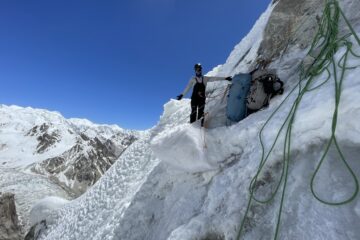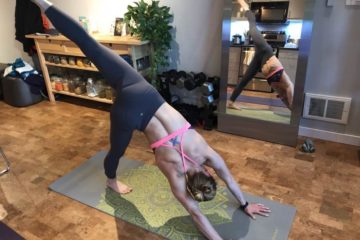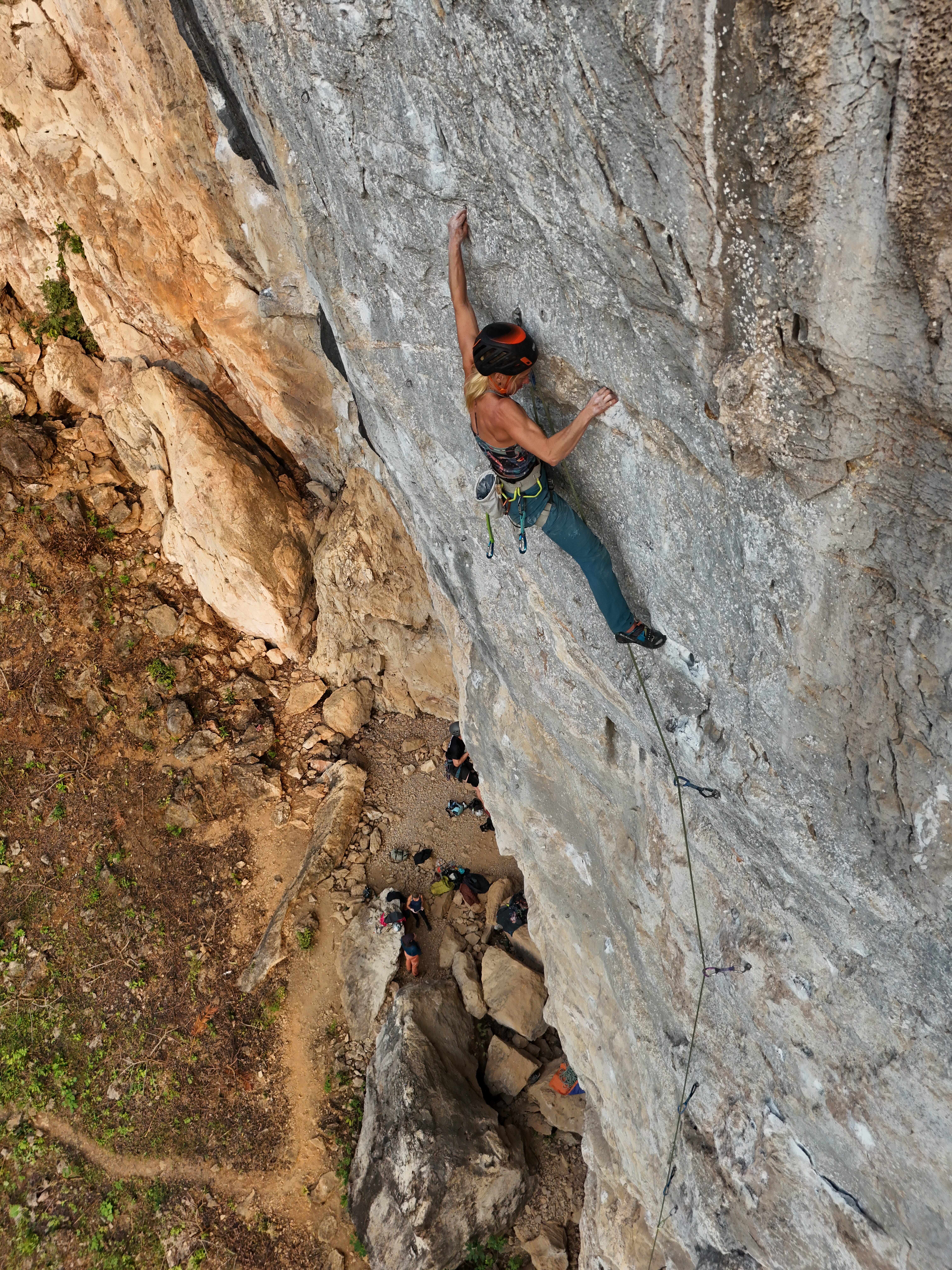
I’ve tried to start finger training many times over my 10+ years of climbing but have never been able to stick to it. My biggest difficulties were:
- Making it convenient enough to do so that I can stick to it
- Fear of injuring myself training
- Not seeing results and improvement
In the past, I had a Trango Rock Prodigy hangboard mounted in my house, a load of weights, a harness and pulley system. I got marginally stronger but also got minor injuries in both hands when training two finger pockets. Luckily for me, lumbrical injuries heal fairly quickly.
But after a year of dedicated sport climbing and hiring a climbing coach, Ian Cooper with lots of great training knowledge, and biting the bullet on some tools recommended by Cristoph Kobbel I finally have a training system that works for me.
The Tools:
Tindeq
We got the Progressor 200 Rechargeable Tindeq since the 500 is overkill for the finger training most people need to do. It measures amount of weight that is pulled, the rate of force development and provides cues for when to pull and when to rest which helps for training 7 seconds on, 3 seconds off workouts for example. It records the data and you can export it to share and for further analysis. It also tracks your history so that you can easily see your progress, solving problem 3!
It has two attachment points that you can easily clip a carabiner to or attach cord through. On one side I attach the fingerboard and the other side I attach to a hard point or use a rope hooked around my own foot.
It’s rechargeable, but I hardly ever need to charge it. I think I’ve charged it once over 6 months of use. It is Bluetooth compatible and connects directly to your Iphone or Android device. For the nerds and software engineers, if you’re keen on customization, it has an open API, allowing seamless communication using Python or your preferred programming language.
It weights only 150g making it easy to bring to the crag or carry around the world in a backpack!
Captain Fingerfood Unlevel Edge
There are many fingerboard edges out there to choose from, but we settled on this incredible edge based on our friend Christoph Kubel’s recommendation. The curved geometry allows more even loading of all four fingers and the wooden material
A Sling, Piece of Rope or Cord and Carabiners
To attach the Tindeq, finger edge and the anchor you will need some carabiners and lengths of cord, rope or slings. You can attach the Tindeq directly to the edge, but carabiners make it easier to take on and off. Soft material will make sure it doesn’t scratch the Tindeq or cross-load it, but it’s not self adjusting so make sure the edge isn’t at an angle. You will be attaching the other end to either an anchor above, a hard point in the ground or your own foot. The different options are explained below.
Resistance Bands (optional)
We have the YY Elastic Bands for training but any brand will work. Resistance bands are great, relatively lightweight training devices that can replace weights with some caveats. It’s much easier to take weight off your arms by stepping into bands to reduce your load, but you can also pull up against them to add resistance. They are more joint-friendly but add a less consistent resistance than weights. It takes a little creativity to use them in a variety of ways. Of course you can use a lifting pin and weights or a pulley system if you have access to it to get more accurate training and results.
Chalk
It’s important to have chalk to maximize your pulling power!
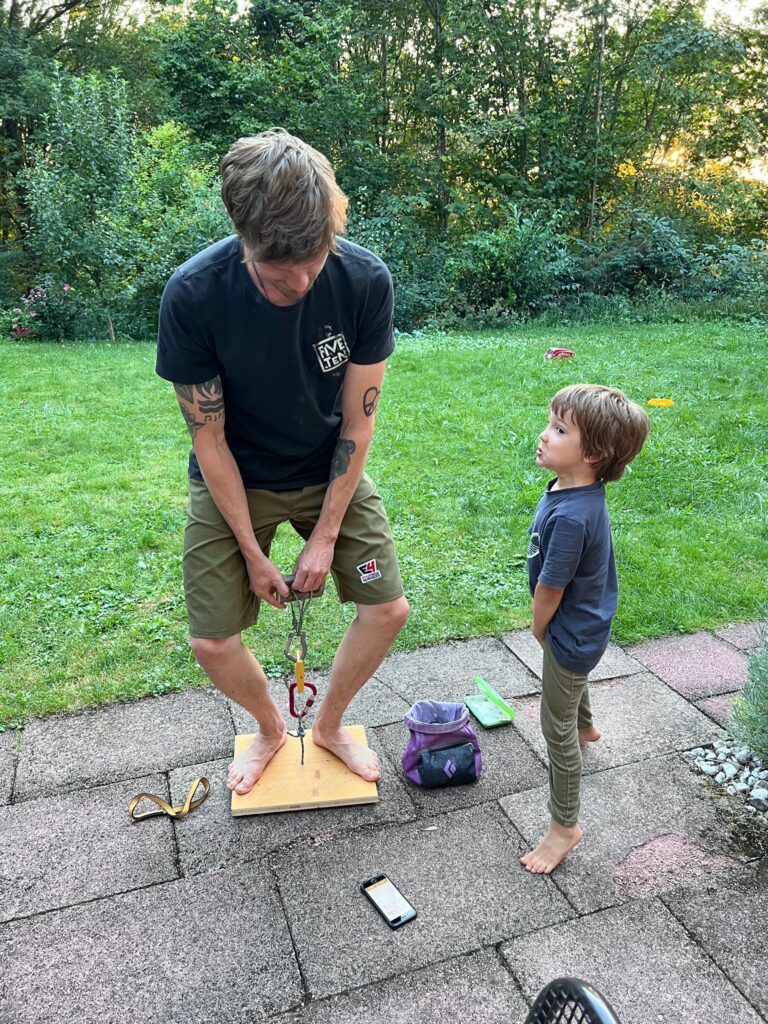
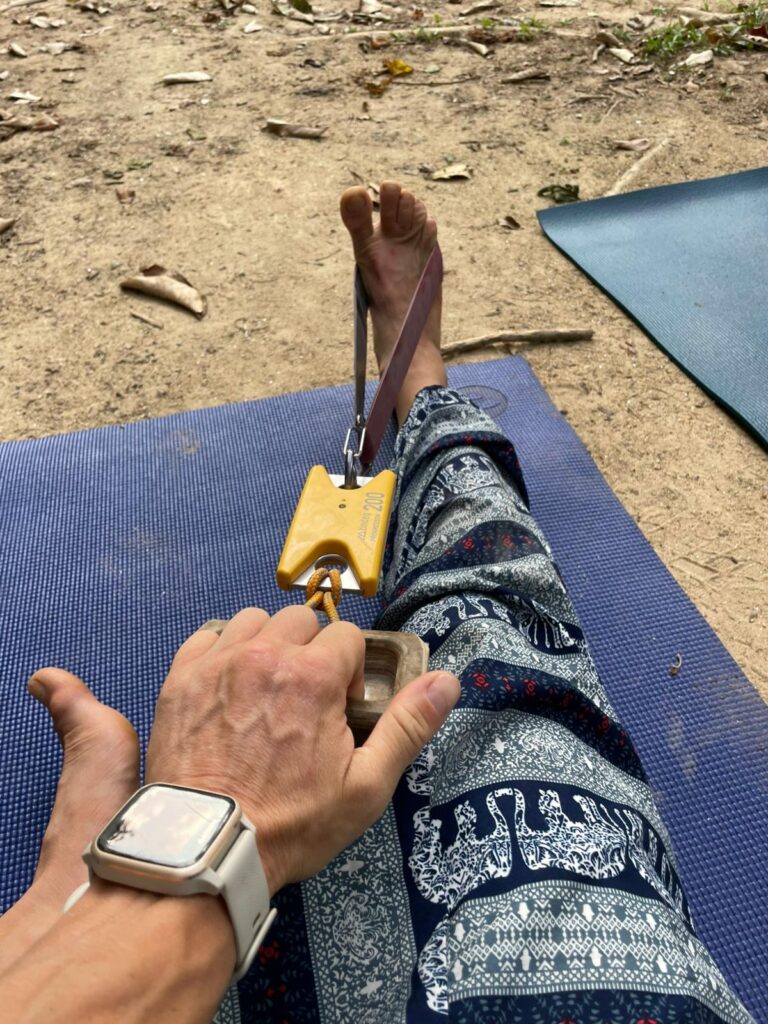
The Training:
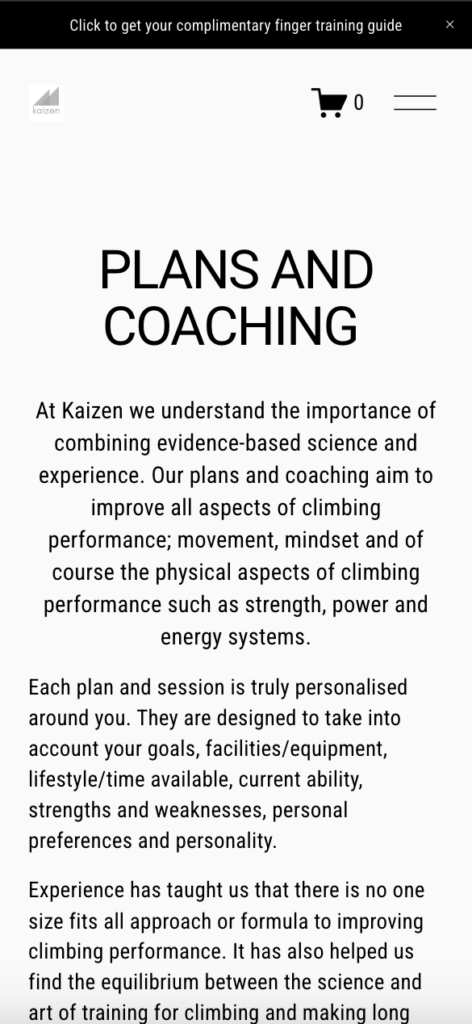
I wanted to keep it really simple and the plan that Kaizen Climbing provides is perfect.
To get the PDF visit https://www.kaizenclimbing.co.uk/plans and check out the banner at the top: Click here to get your complimentary finger training guide.
The basic idea is to train your half-crimp max strength. Half-crimp on at 20mm edge will translate to stronger fingers in nearly all grips (pinches and jams require additional training)
Warm up from 50% of you max effort, to 100% with decreasing numbers of pulls, so
- 5 pulls at 50%
- 4 pulls at 60%
- 3 pulls at 70%
- 2 pulls at 80%
- 1 pull at 90%
The final pull will give you an idea of how you are feeling that day. This is where the Tindeq really shines, you don’t want to pull harder than you can for your recovery level that day and risk injury, so only aim for that 90% for the rest of the session. This prevents trying in vain to lift a weight that you lifted in a previous strong/low gravity day! You can also track your max pulling power over many days and track your fitness and recovery. Listen to you fingers 😉
In the training session you will do 3 sets of 5 reps, keeping 3 reps in reserves, meaning you feel like you could do 3 more, but don’t. Go for quality!
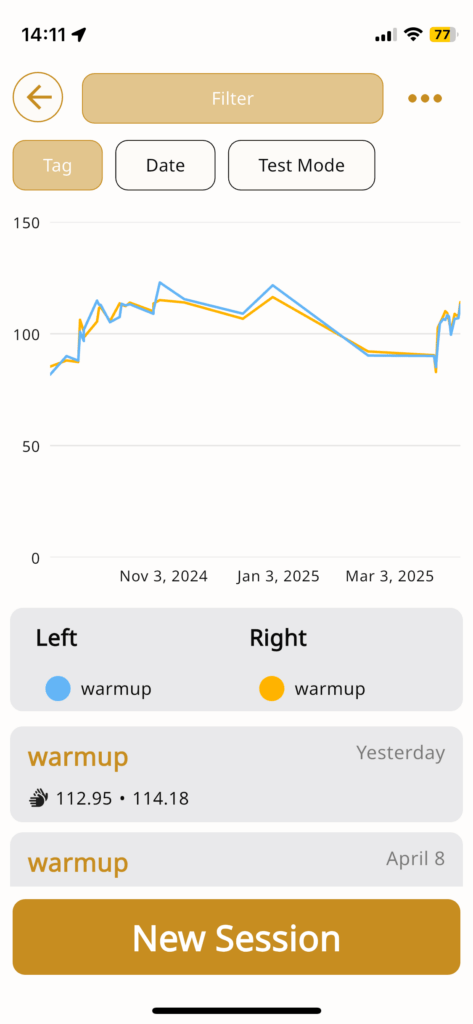
Take 90 seconds rest between hands, with adds to 3 minutes between sets. In the document, a lift consists of simply lifting the weight from the ground, but with the Tindeq I aim for 3 seconds per pull to build up to max without shocking my fingers. Rest 5 seconds between reps.
As you progress you will see that you can pull with more and more force. Track your warmups and max pulls with the Tindeq easily!
Train your fingers before a climbing day or on rest days. You want to have max power to train this specific adaptation and it won’t impact your climbing if you only go to 90%.
For a warmup before climbing I generally will only do 2 sets if my project is fingery, but 3 would be find too.
I attach the fingerboard to the Tindeq and attach a sling on the other side and wrap it around my foot. Then I pull upwards against my own foot to create resistance. You won’t be able to lift yourself off the ground of course. 😉
You can also use a rock or a tree and brace yourself against it to pull horizontally, attach it to a bolt to pull downwards, or use a ground anchor to save yourself some potential foot pain. I find pulling against my feet to be the most convenient.
Pulling vs. Curling
For the nerds out there, you can do both Curling aka Concentric Isometrics load (overcoming) and Pulling aka Eccentric Isometric load (yielding). I do one set of each. Curling yields less force overall because you shouldn’t be engaging your biceps and shoulders to add force. In reality it can be hard to see the difference because the range of movement in the fingers is very small in the isometric exercise. However the difference is more obvious if you use resistance bands with lighter (curling) and heavier weights (pulling). You can do either style from a hanging position or pulling against your foot or ground anchor.
Tyler Nelson aka C4HP has a great video about all of these options
This training is not just physical but mental as well. It trains your nervous system and Mindy-body connections. You start to learn how this grip works and trust your fingers. There can be a friction point when transferring your new grip power to the rock, to make sure to focus on that when on the rock. You know you can technically hold onto these holds, so try it out and build your confidence!
Feel free so ask questions in comments or send me an email. I will update this post as I go!
